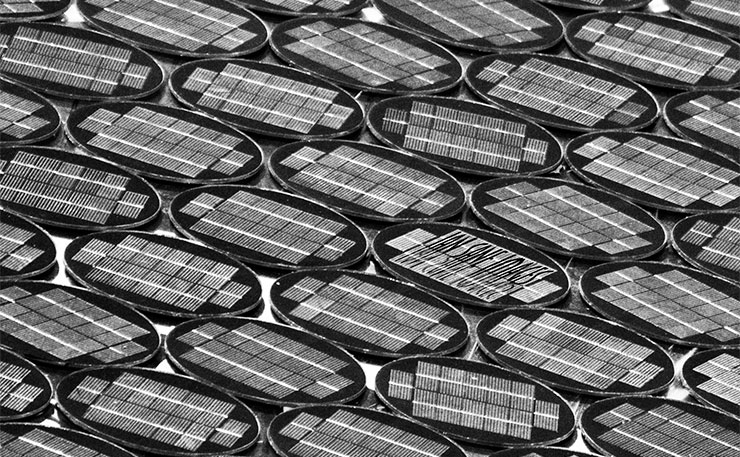Batteries have a great future powering cars. They have a terrible future powering everything else, particularly our homes. Geoff Russell explains.
A few people might guess that The Australian Council of Learned Academies would perhaps give out Oscars; not so. ACOLA is at the pinnacle of Australian Science and her recently released 158-page report on Energy Storage is definitely worth a read.
Did you see all the coverage on the 6 O’Clock news? I thought not. The ABC gave it 600 words on-line and the SMH give it about 500. Who said quality journalism is dead?
It might surprise some people that the ACOLA report identifies some terrific opportunities for the Australian mining sector as a result of the global renewable energy expansion. The term “renewable” in “renewable energy” refers to the energy source, not the means of harvesting it. Harvesting renewable energy turns out to be a very resource intensive business.
The chart below shows data from the 2015 US Department of Energy Quadrennial Technology review. As you can see, mining companies are big winners in any renewable roll out.
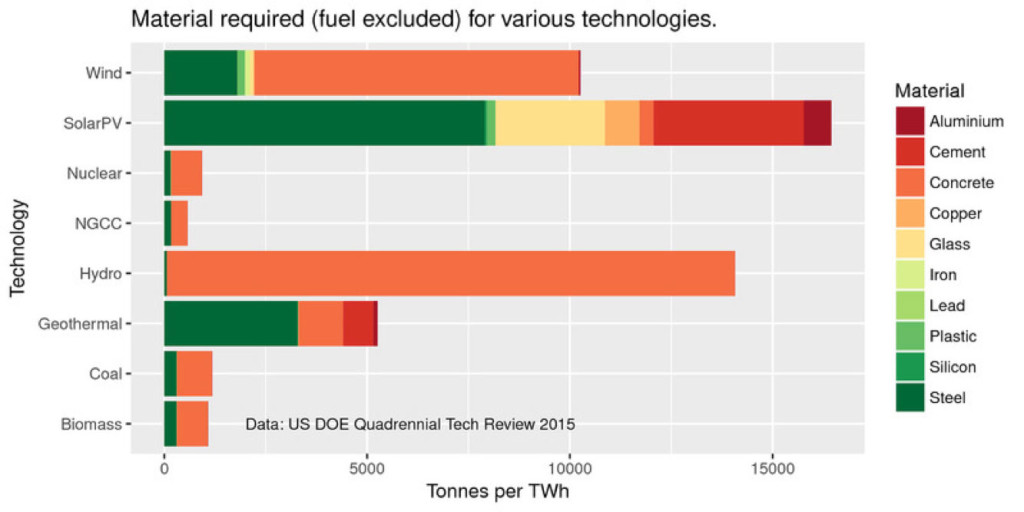
Not shown on the graph is the additional mining required for battery chemicals. It’s not clear which battery chemistry will win out, but the question probably doesn’t make sense. The various competing technologies all have strengths and weaknesses, so we’ll inevitably need more lead, cobalt, lithium, not to mention the various things that will be turned into molten salt batteries.
The “salt” in these batteries isn’t table salt, but usually a mix of the fertilisers sodium and potassium nitrate. These battery fertilisers are made in large chemical factories, and if they take off, we (the world) will need hundreds of plants like the one in the Pilbara threatening the ancient Aboriginal Burrup art.
ACOLA also identifies opportunities thrown up by the renewable energy hazardous waste streams. They listed it as a key point, but didn’t quantify anything.
Here’s a few pictures that might clarify the message about materials and renewables in the above graph.
First, we have a picture of a large wind turbine (an Enercon E126). The hub shown is about 135m above the ground.
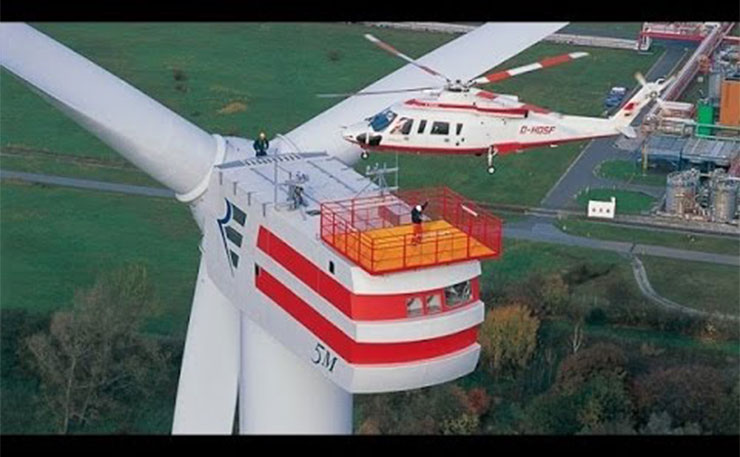
And at the bottom of the 2,800 tonnes of tower is another 2,500 tonnes of foundations; like this.
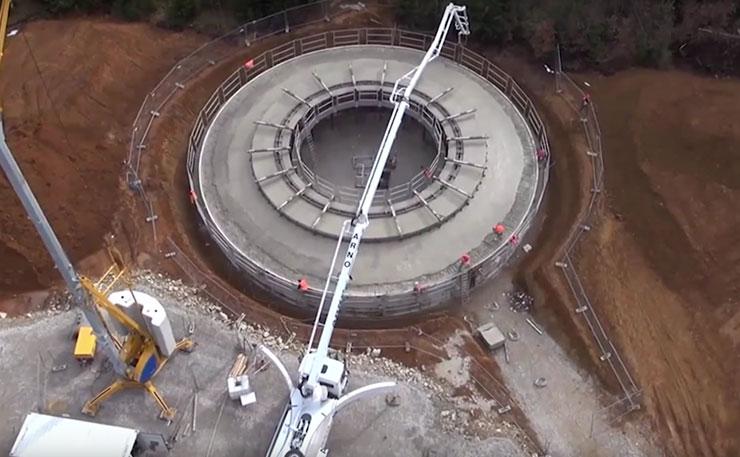
A wind turbine is a bit like a tree; half of it is out of sight and out of mind.
But it isn’t quite like a tree. As well as the actual turbine, there is the considerable mining and waste footprint in the production processes that built it, but which are missing from the picture.
This E126 is one of the world’s biggest on-shore wind turbines, with recent models having a power rating of 7.5 megawatts; meaning this is it’s maximum power. So it will typically generate about 22,000 megawatt hours of energy per year. That’s what you get when you multiply 7.5 by 24 by 365 by 0.33.
What are these numbers? The 24 and 365 are the hours in a day and days in a year and the 0.33 is called the capacity factor and reflects the simple truth that a wind turbine does very little for 2/3 of any year. It’s total output over a year is about 1/3 of what it would produce if it was maximally windy 24×7.
Now, for comparison, here’s Australia’s only nuclear reactor; a small research reactor at Lucas Heights in Sydney.
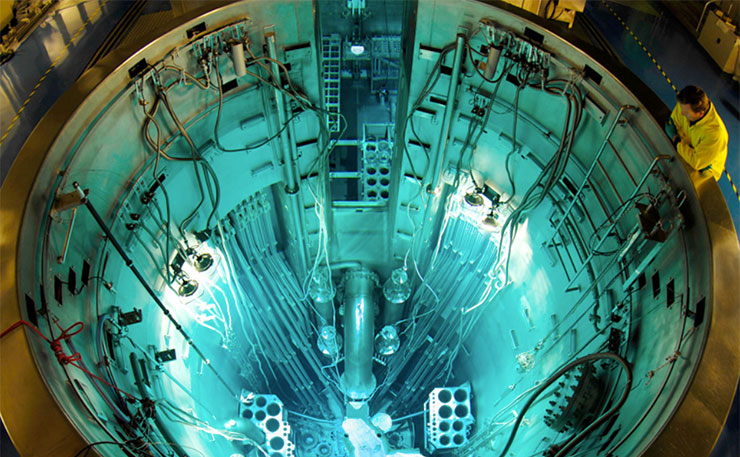
No-one would operate a very expensive research reactor, with all its bells and whistles, like a power reactor, but if you did, it would generate about 140,000 megawatt hours each year. That’s right, almost 7 times more than that massive turbine with all its steel, concrete and rare earth metals.
As you can see, this is an open pool reactor.
The fuel is at the bottom of a pool of water that’s about 13m deep (1/10th the height of the wind turbine pylon) and about 4.5m wide. It’s maximum power output is 2.6 times that of the turbine and it can run for about 80 percent of any year, instead of 1/3, with the other 20 percent of time refuelling. Refuelling isn’t a random affair, there is a schedule, you know exactly when the reactor will be up and when it won’t.
A power reactor is a little bigger but without any of the extensive research features. Something like the South Korean APR1400 has a maximum power output, somewhat obviously, of 1400 MW.
During a year it would generate as much energy as 500 of those 7.5 MW turbines; with their 1,250,000 tonnes of foundations and 1,400,000 tonnes of turbine tower.
When I say a little bigger, that’s exactly what I mean. An APR1400 reactor isn’t an open pool, it’s more like a steel pressure cooker. But it’s still a similar size to the little Opal reactor, meaning that the “cooker” is much the same size, 4.6m in diameter and 14.8m high. But unlike the research reactor, the cooker has far more fuel and is contained in a large concrete containment vessel that’s about 45m wide and 76m high… about half the height of the wind turbine tower.
A power reactor doesn’t have to be built like this, it is perfectly feasible to have an open pool power reactor; but pressure cooker models are more common (for now).
How much uranium do you need to mine to get all that energy each year? About 280 tonnes. And how much in the next generation of advanced fast neutron reactors? More like 2.8 tonnes.
Will wind turbines every be 100 times smaller to generate the same amount of power? No. Will solar farms every be 100 times more efficient than now? No.
A war on waste
Did anybody see the TV series War on Waste? Remember the coffee cups? Who could forget the coffee cups? The size of Australia’s annual coffee cup waste “catastrophe” has been estimated at 60 tonnes of plastic. If there are 1.5 billion people on the planet with a similar level of plastic coffee cup waste, that comes to about 3,750 tonnes. The global annual production of plastic is 380,000,000 tonnes.
It’s a rare skill to be able to find such small problems to distract people from the huge and important problems we face.
Coffee cups are insignificant compared with our climate problems. They are insignificant compared with the mining and production of all the resources used in a single E126, together with the mining and production for all those in the backup systems necessary to handle the times when the wind isn’t blowing, not to mention the toxic waste streams associated with the entire process.
And I haven’t even mentioned the dead bats. In the US, wind farms are now estimated to be the second biggest threat to bats behind WNS (a serious disease). In Australia? We tend to work on the principle that what we don’t know can’t hurt us. So we’ve been very careful to avoid any substantive research on such matters.
But let’s get back to that ACOLA report.
It’s a fascinating and revealing report not just for what it says, but for what it doesn’t say.
Does the report consider whether the deployment of storage technologies can contribute to preventing further climate destabilisation? Does it ask what the optimal technologies and deployment strategy might be? Does it ask which storage technologies can scale in the time available to be effective?
None of the above.
This report is focused as I implied at the beginning of this article on identifying opportunities for what could loosely be called sci-biz in the energy storage sector. The longest chapter in the report is about public perceptions. It’s a chapter that should have been called: “Why don’t people buy more batteries?” It’s disappointing to see scientists using focus groups and anecdotes in a serious report on an important topic.
Decarbonising our energy system isn’t an end in itself, nor is it some pleasant walking track we can amble along at a leisurely pace. Reading this report, it’s impossible to believe that its authors appreciate the nature and urgency of the problem. We need our best scientists and engineers to use their skills to tell us what will work, and if it won’t work, it doesn’t matter a damn how popular it is in some focus bloody group.
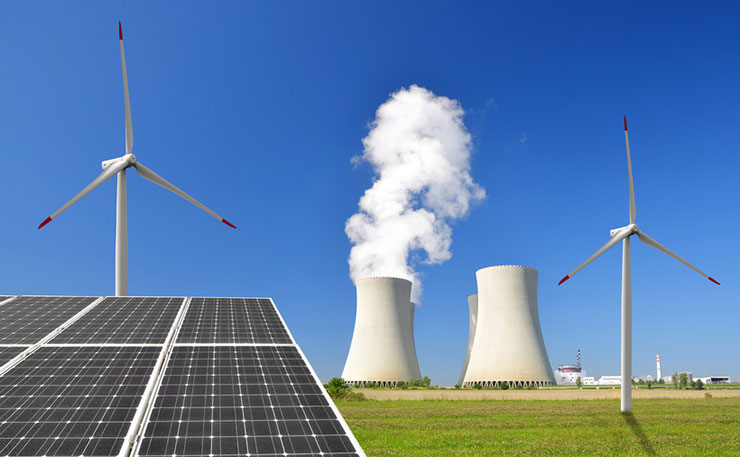
Imagine a company preparing a quote to build a bridge. Their design process would be structured around minimising risk while matching some kind of traffic flow predictions and keeping costs as low as reasonable. But for ACOLA, the problems in rolling out renewable technologies, along with the problems in all the various energy storage technologies are seen as wins.
Problems for ACOLA aren’t hurdles at which our climate change response may falter or fail, they are opportunities for one or other of our learned academies to tout for funds and do some really clever science and partner with industry to make money.
Batteries catch on fire, wear out quickly, create toxic waste streams, require considerable mining of rare or dangerous stuff, frequently from countries which don’t mind putting children in harm’s way. Some storage technologies need constant maintenance or involve dynamiting and flooding considerable areas of wildlife habitat. ACOLA sees these as opportunities rather than problems. You can almost feel the hernias popping under the strain of a heavy pile of grant applications.
But perhaps the report’s deficiencies are merely a result of the terms of reference it was given?
I recall a couple of times during my student days sbeginning an essay by arguing that the given question was particularly inconsequential and going on to answer a related question of considerably more substance. A group of senior scientists who understood the gravity of our climate problem would, you’d imagine, still keep their jobs if they did similarly when given overly restrictive terms of reference.
ACOLA should have begun this report by first checking the assumption that renewables are an optimal climate strategy. But even when the sub-optimality of our renewable obsession was staring them in the face, they passed over it without comment.
Chapter 4 begins with some stunning numbers:
“Over the past decade, Australians… have spent $A40 billion… on [renewable]energy investment. This investment contributed to solar PV installations growing from 8 MW to 5,400 MW.”
Did none of the ACOLA authors notice how small 5,400MW of PV is and how large $A40 billion is? Was there nobody who could divide one into the other and assess the bang for buck?
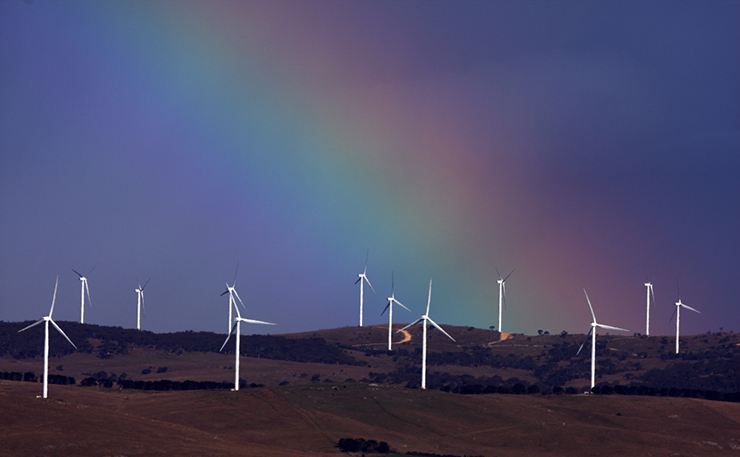
So let’s do it. Take the figure of 5,400 MW, multiply it by the capacity factor of solar, say ~16%. Now add in the 3,904 MW of wind that was presumably also paid for by the $40 billion. Multiply that by it’s capacity factor of ~33% and we see $A40 billion has bought us the ability to generate as much energy per year as 2152 MW of constant 24×7 power.
It’s also delivered a cornucopia of sci-biz opportunities to make and sell some really big batteries to paper over the holes in this ceiling wax and string mess.
In contrast, during the past decade, the UAE has been spending US$20 billion on four South Korean APR1400 nuclear reactors which are on schedule to provide 5,600 MW with a capacity factor of ~90% which is equivalent to about 5,040 MW of constant 24×7 power.
So the UAE will be getting almost double the energy for a bit over half the cost. Factor in that the reactors will have a life span of probably double that of the PV and turbines and it’s pretty clear that the Australian public (and a few others around the world) has been sold a crop of rotting lemons.
And the UAE won’t have any big battery problems to solve because they won’t need any big batteries. And they won’t need to dynamite valleys for damn dams or increase the child labour rate in the DRC.
The above figures make it pretty clear that in a rational country with a scientifically literate electorate, or in a country with a scientifically literate set of political parties, batteries would have little or no role in an efficient solution to decarbonising our electricity system.
But that still leaves a substantial possible role for them in decarbonising transport. So there is no shortage of useful work for battery scientists. They are, in fact, an incredibly valuable resource that we really don’t want to waste dealing with a problem that already has a much better solution.
The ACOLA report gives one number that should have exposed the magnitude of the transport problem, but didn’t because they didn’t provide the necessary context. Let’s fix that.
They reported that Tesla will be producing 35 GWh/year of Li-Ion battery cells by 2018. Here’s the context. The battery pack in a Tesla automobile is about 100 kwh. So 35 GWh is 350,000 vehicle batteries. But the world sold 94 million new vehicles in 2016, up by 4 million from 2015.
Given our desperate need for vehicle batteries and the lack of good alternatives to decarbonise vehicle emissions, anybody irresponsible enough to use valuable battery resources in a grid connected house should be subjected to force-reading the last decade’s worth of Hansard energy policy debates.
The definition of conflict of interest needs to be broadened to deal with self-interested pork barrelling reports like this. Clearly ACOLA didn’t do any kind of analysis of the optimum solution to our energy decarbonisation problems; which would have told them that storage wasn’t a substantive part of any optimal decarbonisation solution of stationary energy.
Their report could have been rather shorter if they’d quickly dispensed with stationary energy storage and put their effort where it could be useful. But they seem far more interested in sci-biz than combating climate change.
More’s the pity. What happened to disinterested scientists in pursuit of the truth?
PLEASE CONSIDER SHARING THIS STORY ON SOCIAL MEDIA: New Matilda is a small independent Australian media outlet. You can support our work by subscribing for as little as $6 per month here.
Donate To New Matilda
New Matilda is a small, independent media outlet. We survive through reader contributions, and never losing a lawsuit. If you got something from this article, giving something back helps us to continue speaking truth to power. Every little bit counts.

